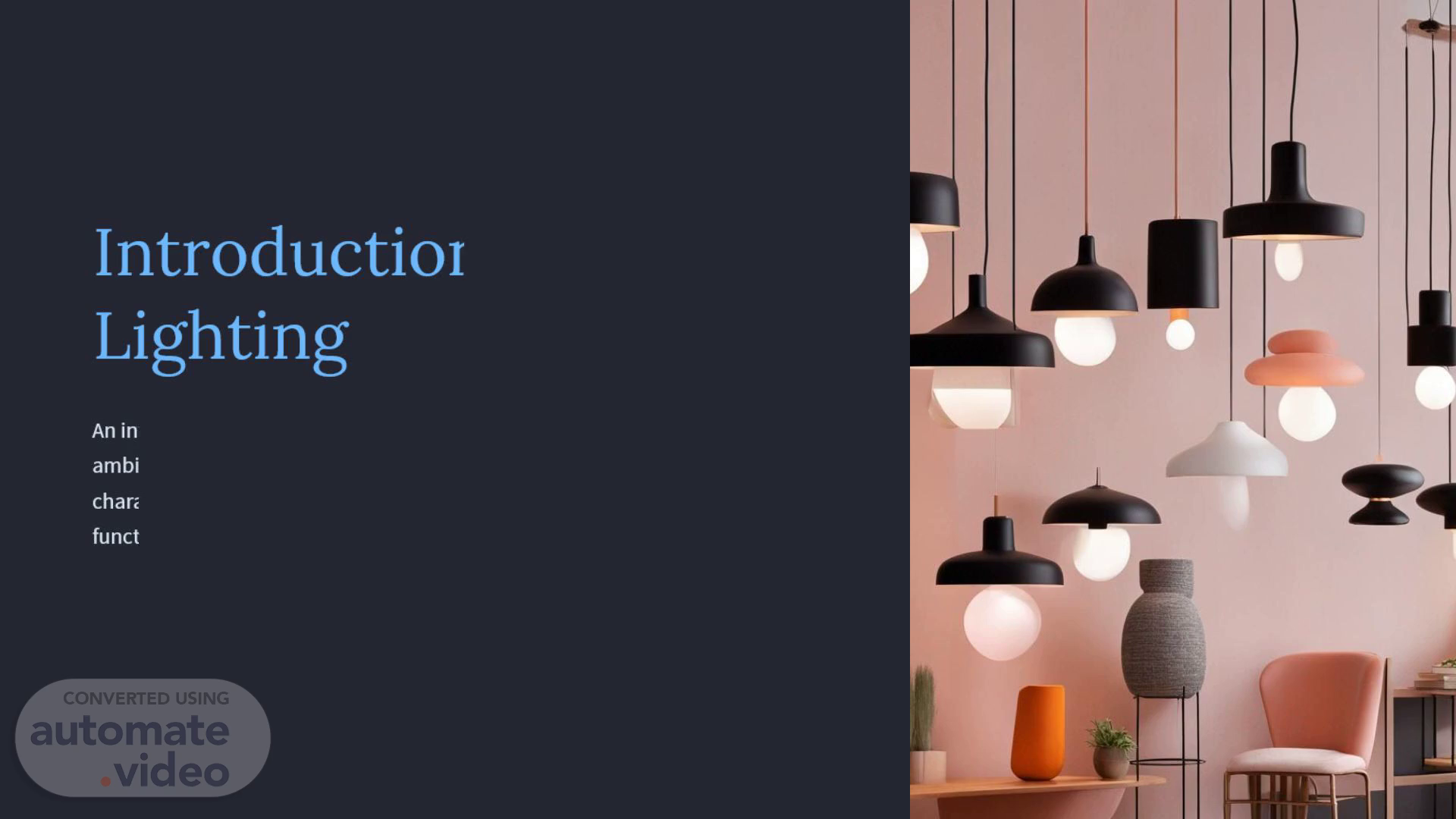
PptxGenJS Presentation
Scene 1 (0s)
Introduction to Lighting. An introduction to different types of lighting, including natural, artificial, ambient, task, accent, and decorative lighting. Understanding the characteristics and applications of each type is crucial for creating well-lit and functional spaces..
Scene 2 (17s)
Natural Lighting. 1. Sunlight. Natural lighting, derived from sunlight, provides a bright and warm illumination to indoor spaces. It can create a welcoming and refreshing atmosphere, and it's also beneficial for health and well-being..
Scene 3 (45s)
Artificial Lighting. LED Lighting. LED lighting is energy-efficient and versatile, offering a wide range of color temperatures and intensity levels. It's widely used for both residential and commercial applications..
Scene 4 (1m 12s)
Ambient Lighting. 1. General Illumination. Ambient lighting provides overall illumination to a space, ensuring visibility and comfort for daily activities. It sets the foundational lighting tone for a room..
Scene 5 (1m 37s)
Task Lighting. Desk Lamps. Task lighting, such as desk lamps, provides concentrated illumination for specific activities like reading, crafting, or working on a computer..
Scene 6 (2m 2s)
Accent Lighting. Spotlights. Spotlights are an effective way to draw attention to specific objects, architectural elements, or focal points within a space..
Scene 7 (2m 24s)
Decorative Lighting. 100K. Luxury Fixtures. Decorative lighting often features luxurious and ornate fixtures, adding a touch of elegance and sophistication to interiors..
Scene 8 (2m 46s)
Conclusion. Balance and Layers. Creating a well-lit space requires a thoughtful combination of natural, ambient, task, accent, and decorative lighting to achieve balance and visual interest..